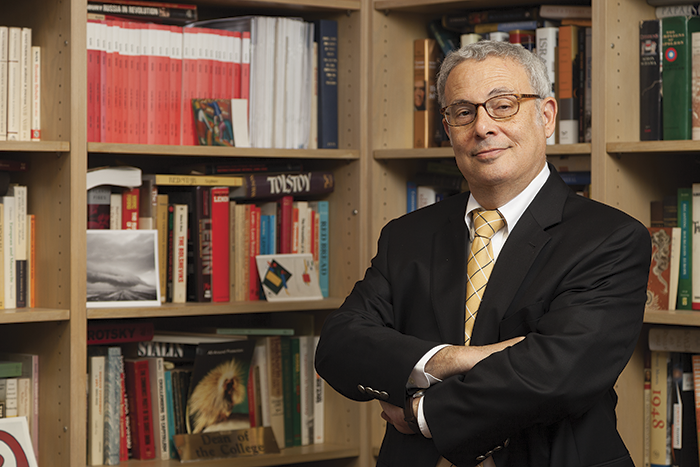Dickinson Matters: The $64,000 Question

Photo by Carl Socolow '77.
I recently received a letter from an alumnus who raised concerns about the cost of a Dickinson education. How could we possibly justify our current price tag, he asked? Why couldn’t we deliver a quality education at a lower price?
It’s the $64,000 question. And one that I am asked often. I thought it would be useful to share a portion of my response to the concerned alum here with the entire Dickinson community.
We know that $64,000 a year is a sizable investment. We also are confident that the investment purchases an even more valuable product: a high-quality, individualized education that prepares students for the complex, challenging world in which we live. And that product cannot be delivered cheaply. Here’s why.
Our central value proposition is the personal interaction of students with faculty who are both excellent teachers and researchers, and with student life and other staff who have much to teach as well. Big universities control costs via large classes with hundreds of students and (recently) online instruction; we emphasize the opposite. Our average class size is 15, and students have frequent access to hands-on laboratory work, field trips, service learning, seminars and independent study. These are all techniques with proven high impact on learning. But they are expensive.
To put this in economic terms, we rely on large numbers of highly trained specialists to deliver our product and will not resort to the academic equivalent of mass production. Dickinson students have names, not numbers. Our model resembles, as one provost put it, the older ideal of apprenticeship. The skills our student-apprentices learn—critical thinking, effective communication, problem solving using insights from multiple fields, learning how to learn—are key for success in the 21st century. All this means, however, that we have a much larger expense for personnel than many other institutions. Salaries and benefits are our largest budget line by far.
There are other drivers of cost too. Technology, for example. Maintaining over 2,200 computers and more than 100 smart classrooms is no small budget item. Here, too, the cost of highly trained professionals recurs, as we employ 50 of them in our computer services division. Likewise, our 50 years of leadership in global education and more recent prominence in sustainability carry a significant financial investment.
Moreover, government regulations mandating a variety of expenditures—such as support for students with disabilities, education and enforcement on Title IX issues, and more demanding building codes—drive up costs. These are frequently very worthy expectations to which we willingly respond. But the mandates typically are unfunded.
I must of course add that only a minority of our students pay the $64,000. Over 71 percent of them receive Dickinson financial aid. Our grants average $29,750 (and higher if one includes need-based grants only). This year Dickinson will give $49.5 million in grants; financial aid is our second largest budget item after salaries and benefits. These numbers don’t include outside financial aid to students. In fact, a significant minority of our students pay less to attend Dickinson than they would to attend a flagship state university.
We are addressing the high cost of education. For example, we recently went through a yearlong zero-based budget exercise to ensure that we use our resources optimally. Our commitment to efficiency is reflected, I would argue, in our ability to compete with colleges with much larger endowments. But seeking efficiencies around the margins cannot reverse the primary driver of tuition. That driver is the human capital needed to provide an extraordinarily valuable educational experience.
Given that, our chief way to sustain access and control cost will undoubtedly be increasing our resources for financial aid. Dickinson is comparatively underendowed for aid; most of our grants come from the operating budget.
So it is up to us on campus to make the case for more robust support for financial aid. And it will be up to the wider Dickinson community, especially alumni, to answer the call.
Learn More
Published October 18, 2016